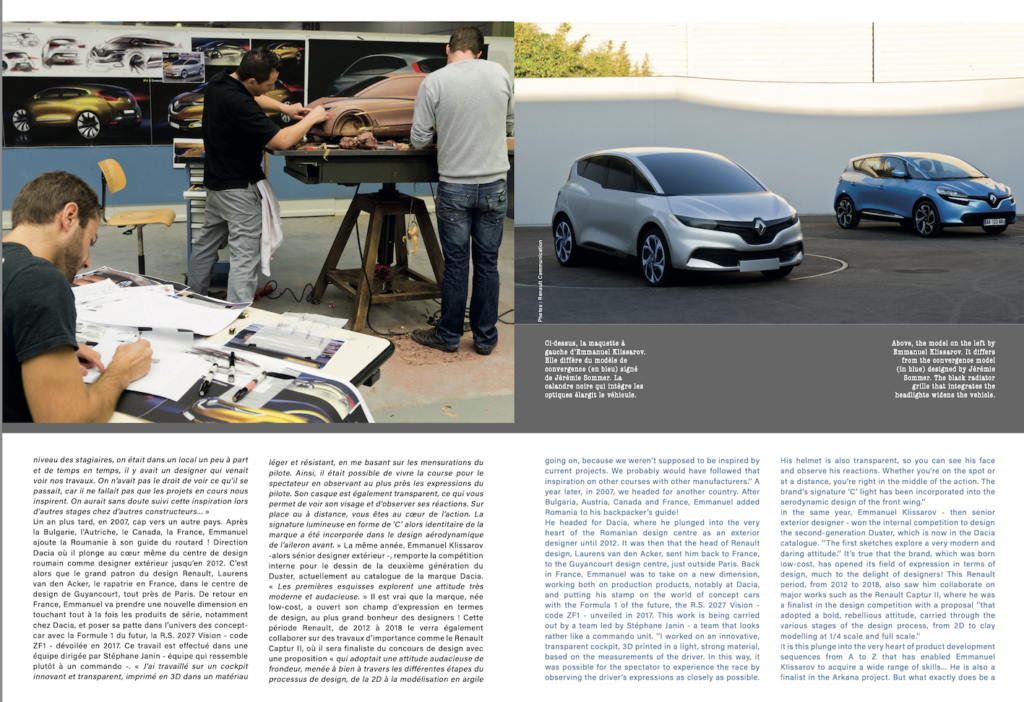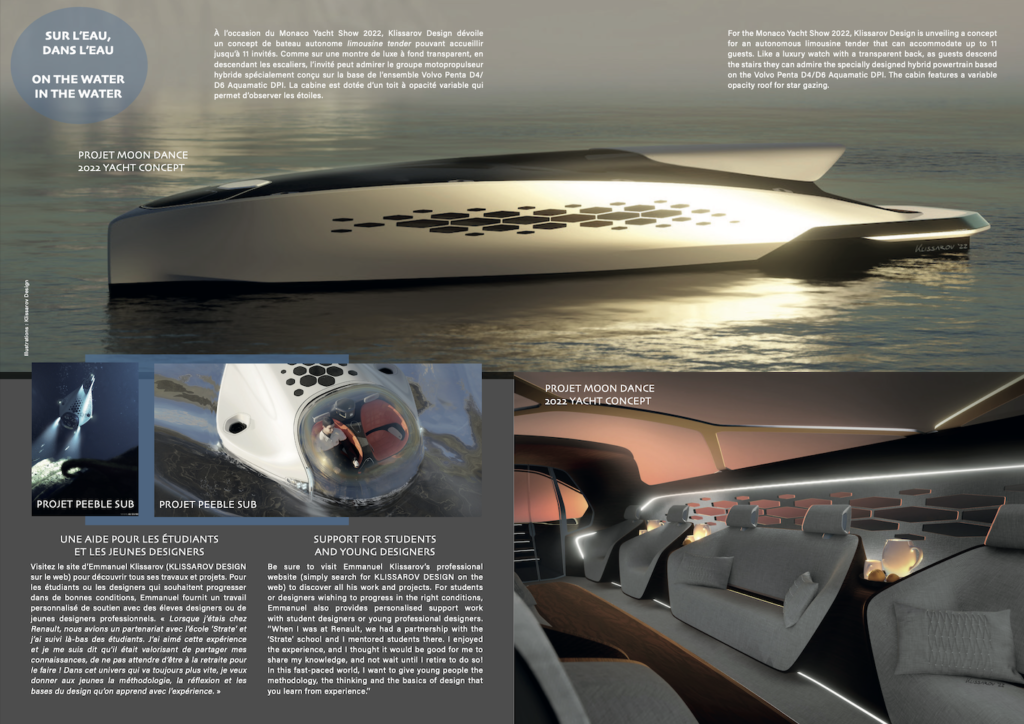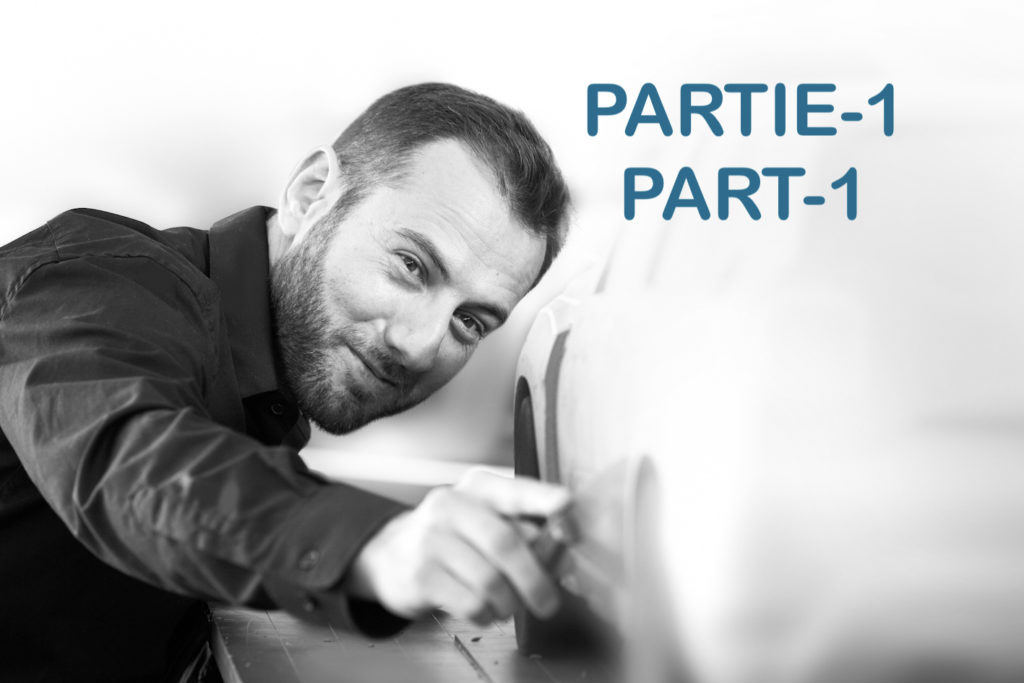
In three acts, LIGNES/auto presents a surprising portrait of a designer with an equally astonishing career. It’s all about snow groomers, the Renault F1 concept car, the Dacia Duster and individual mobility for a pleasant flight in a blue sky. His journey should give hope – and desire – to all young designers and students wondering about the ideal path to take to enter this profession. The story begins in Sofia, where Emmanuel Klissarov was born in 1980.
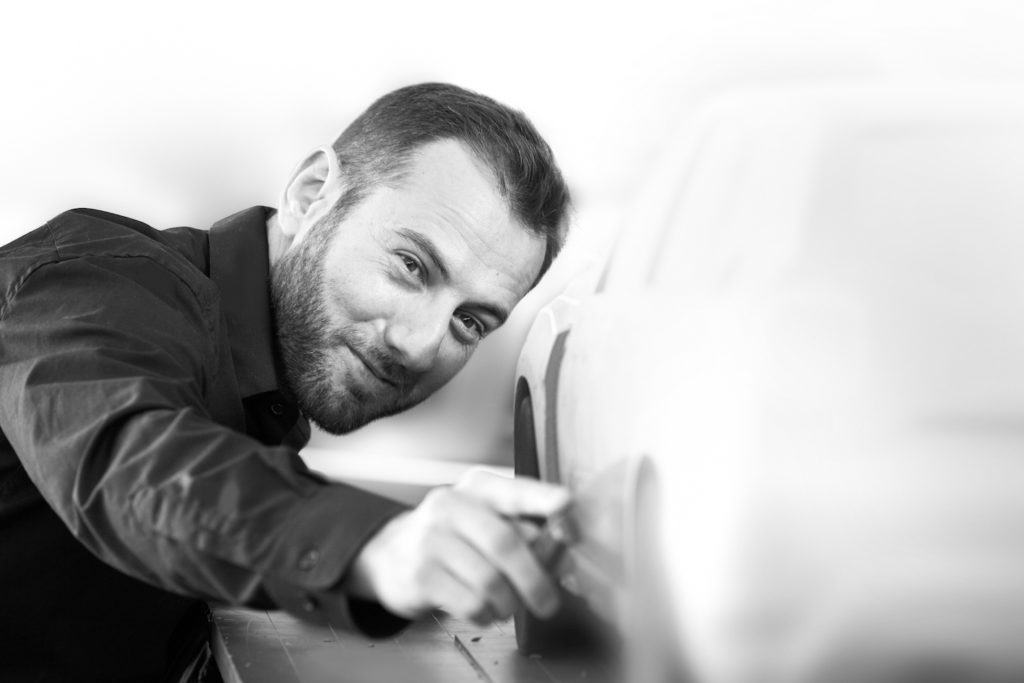
‘‘I was born in Sofia and grew up in Bulgaria until I was 10’’. With the fall of the Berlin Wall in 1989, the Sofiote and his family left the communist regime established on 9 September 1944. ‘‘We ended up in Austria where I was able to learn German, then I went to Montreal where I learned French, even though I speak it with a Canadian accent.’’
NEW: make your reading easier. Download these two bilingual PDFs with bonuses and previously unpublished documents free of charge by clicking on the two PDF buttons below.
Even so, the young teenager still has some vivid memories of his life in Bulgaria. In fact, it was one of these memories that would set him on the path to becoming a designer… ‘‘In Bulgaria, I grew up in the mountains at a sports centre for students at Sofia University. There I discovered snow groomers and all sorts of strange vehicles. They were the first vehicles that made an impression on me and made me want to draw them – that’s where my passion came from, with the snow groomers! And once I got to Austria, I continued skiing amongst these machines! In the end, that’s where it all started.’’
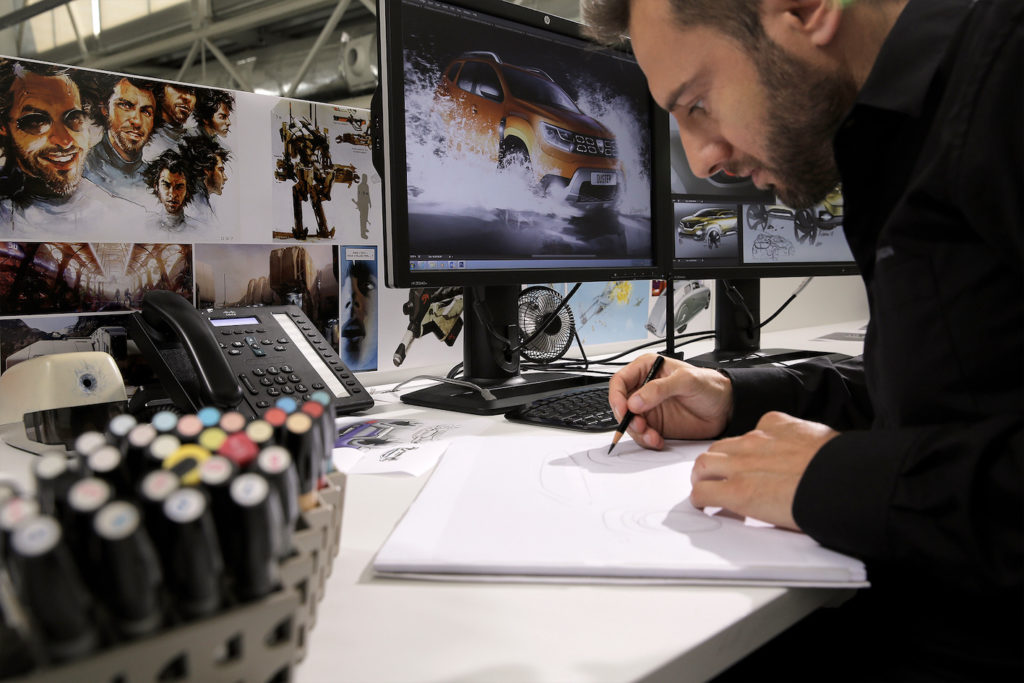
Emmanuel Klissarov’s life changed when he arrived in Canada in 1992, at the age of 12. ‘‘When I went to secondary school in Quebec, I became more interested in design and drawing. I used to draw all sorts of vehicles and was advised to go into industrial design.’’ After Bulgaria, Austria and Canada, Emmanuel Klissarov arrived in France under rather unusual conditions.
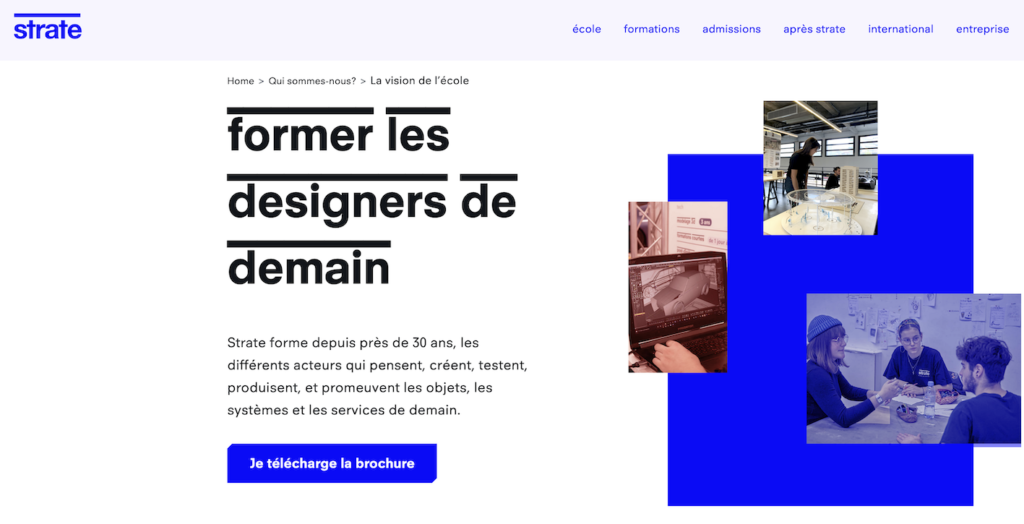
‘‘After my first year of studies at a Canadian university, I was going to try to go into automotive design, but the University of Montreal wasn’t necessarily the right place for me. There were the options of the Art Center in Los Angeles or the CCS in Detroit, but the budgets were too high for me. At the same time I learned that the French school Strate and the University of Montreal had signed a partnership agreement. So I was able to spend a year at Strate, where I got a closer look at automotive design and the training involved.’’

The designer quickly learned our language, while retaining some very Québécois expressions… ‘‘I fell in love with Paris!’’ And at Strate, a man that LIGNES/auto knows well was to guide him. ‘‘I met Philip Nemeth (above) who was one of the teachers at Strate, and he gave me a lot of motivation, help and training. When I was in Montreal, I was one of the best at university, but I found it useful to get out of my comfort zone. And at Strate, I found myself with students who were much better than me! So that forces you to raise your level, to work harder and differently. I progressed rapidly and that year (in December 2005) I won the design competition organised by the magazine l’argus. That changed everything and I was able to secure an internship at Citroën for 2006.’’
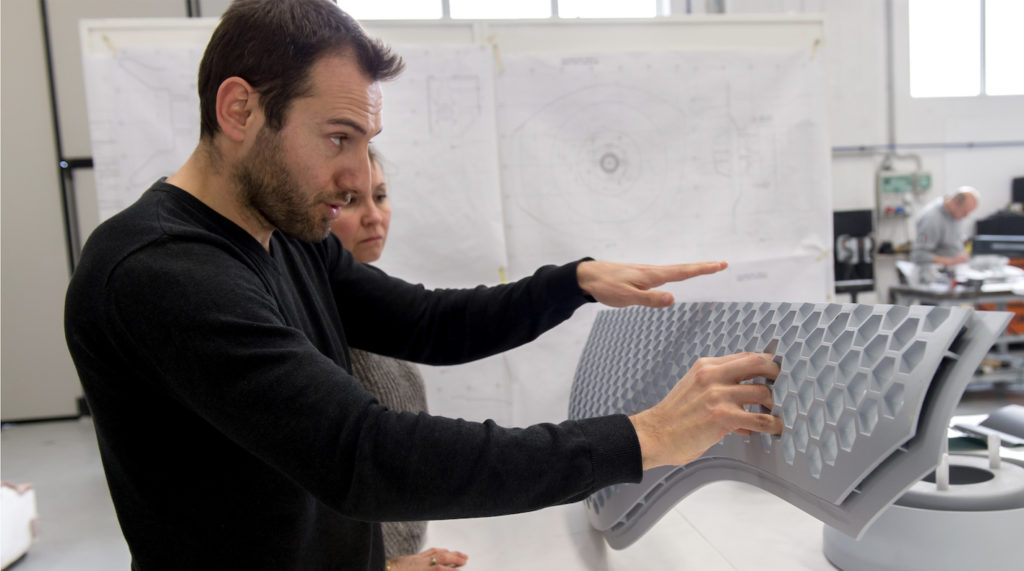
‘’Three months after arriving in Paris I won the competition! It was extraordinary – I knew I was guaranteed a placement with a major manufacturer, and that’s what I’d been dreaming of!’’ In 2006, the Citroën design studio had been run for six years by Jean-Pierre Ploué. The C3, followed by the C2 and C4 are on the road, and other ambitious projects are in the pipeline. Is a trainee involved in this work?
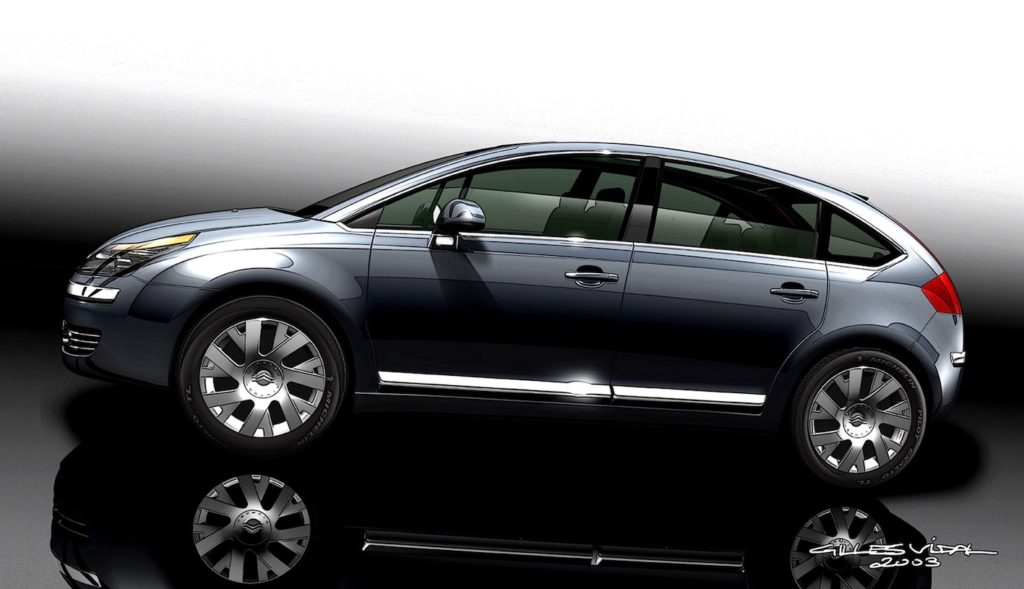
‘‘At Citroën, I report to Cathal Loughnane, who was in charge of interior design at the time (1999-2009, before taking over as head of the Peugeot Design Lab and now at Aston Martin, NDA). I was also supervised by Mark Lloyd, who was also responsible for selecting the Argus jury. Citroën was fairly closed as far as trainees were concerned, so we were in a separate room and from time to time a designer would come and look at our work. We weren’t allowed to see what was going on, because we weren’t supposed to be inspired by current projects. We probably would have followed that inspiration on other courses with other manufacturers.’’
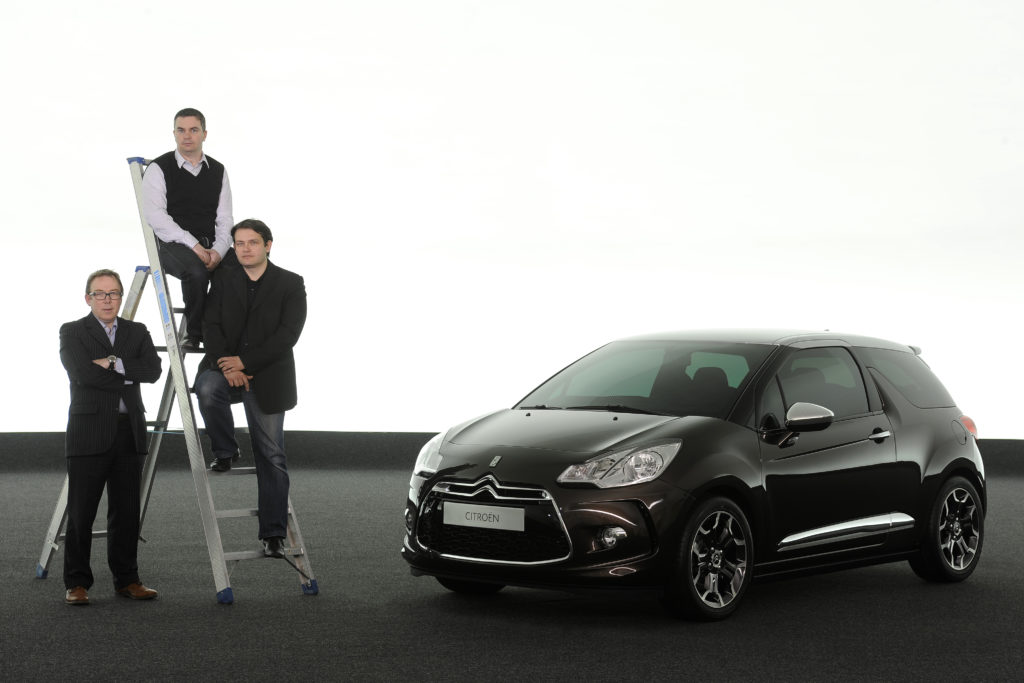
A year later, in 2007, we headed for another country. After Bulgaria, Austria, Canada and France, Emmanuel added Romania to his backpacker’s guide! He headed for Dacia, where he plunged into the very heart of the Romanian design centre as an exterior designer until 2012. It was then that the head of Renault design, Laurens van den Acker, sent him back to France, to the Guyancourt design centre, just outside Paris. Back in France, Emmanuel was to take on a new dimension, working both on production products, notably at Dacia, and putting his stamp on the world of concept cars with the Formula 1 of the future, the R.S. 2027 Vision – code ZF1 – unveiled in 2017.
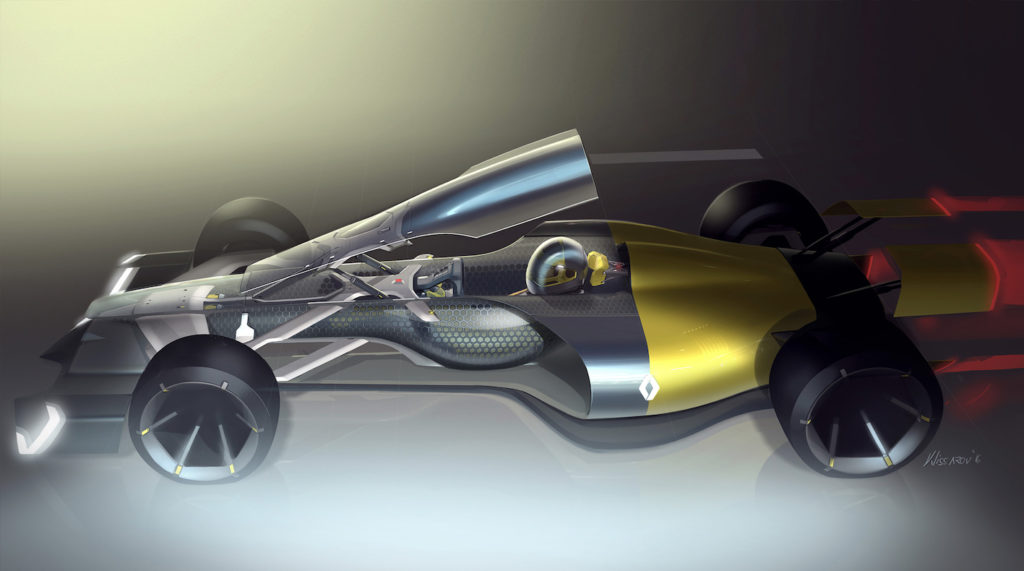
This work is being carried out by a team led by Stéphane Janin – a team that looks rather like a commando unit. ‘‘I worked on an innovative, transparent cockpit, 3D printed in a light, strong material, based on the measurements of the driver. In this way, it was possible for the spectator to experience the race by observing the driver’s expressions as closely as possible. His helmet is also transparent, so you can see his face and observe his reactions. Whether you’re on the spot or at a distance, you’re right in the middle of the action. The brand’s signature ‘C’ light has been incorporated into the aerodynamic design of the front wing.’’
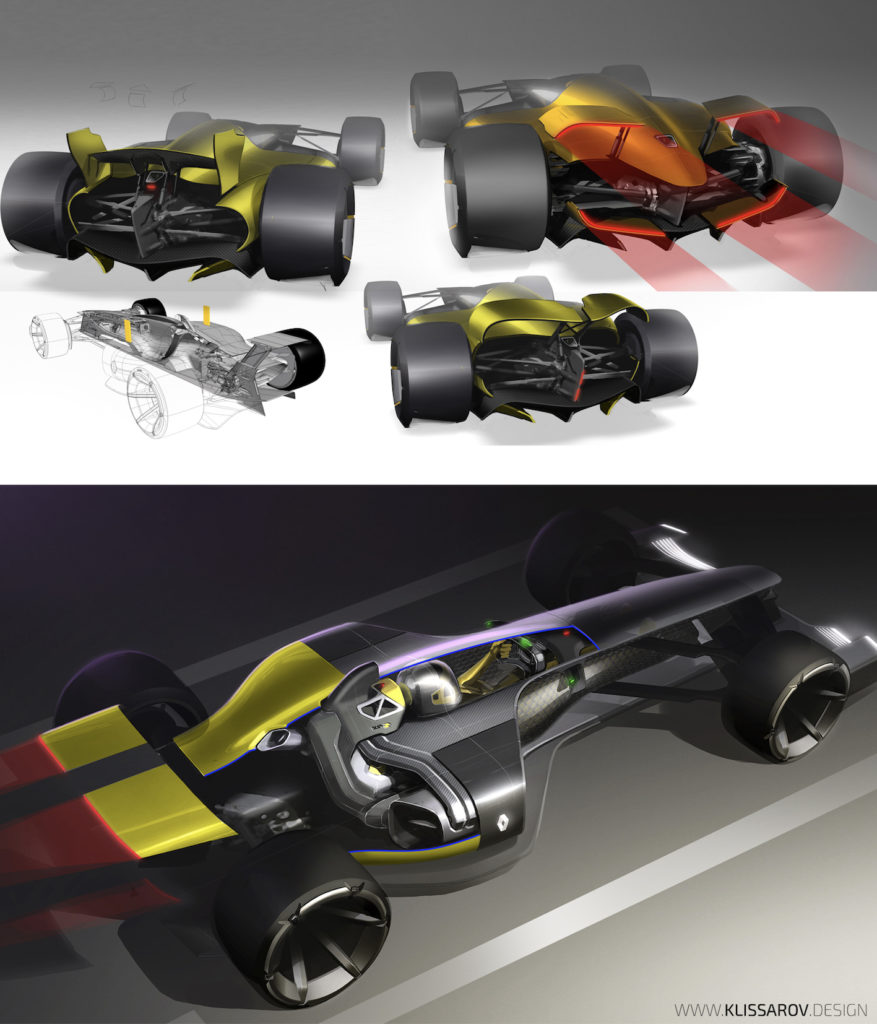
In the same year, Emmanuel Klissarov – then senior exterior designer – won the internal competition to design the second-generation Duster, which is now in the Dacia catalogue. ‘‘The first sketches explore a very modern and daring attitude.’’ It’s true that the brand, which was born low-cost, has opened its field of expression in terms of design, much to the delight of designers!
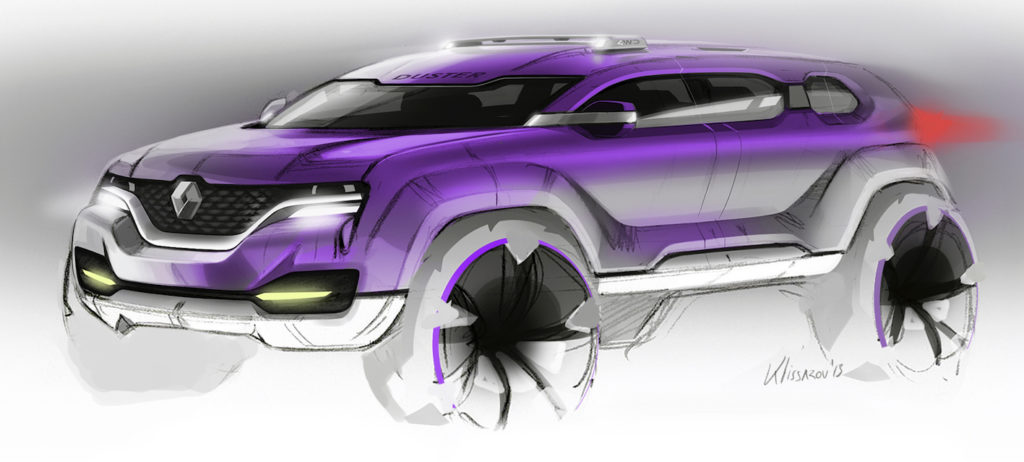
This Renault period, from 2012 to 2018, also saw him collaborate on major works such as the Renault Captur II, where he was a finalist in the design competition with a proposal ‘‘that adopted a bold, rebellious attitude, carried through the various stages of the design process, from 2D to clay modelling at 1/4 scale and full scale.’’ It is this plunge into the very heart of product development sequences from A to Z that has enabled Emmanuel Klissarov to acquire a wide range of skills…
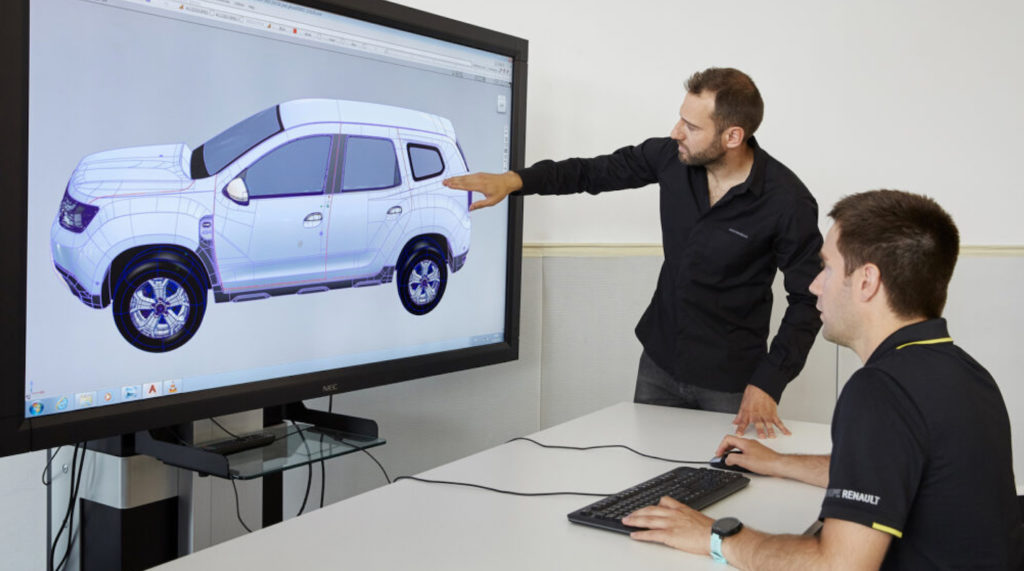
IHe is also a finalist in the Arkana project. But what exactly does be a finalist mean? ‘‘A finalist in a design competition generally has a greater or lesser influence on the production model. For the Arkana, my proposal began in the 2D phase and then quickly evolved into the 1/4 scale clay modelling phase. It culminated in a 1/1 scale clay model and was finally partially mixed with the concept solutions of the other two in-house proposals.’’
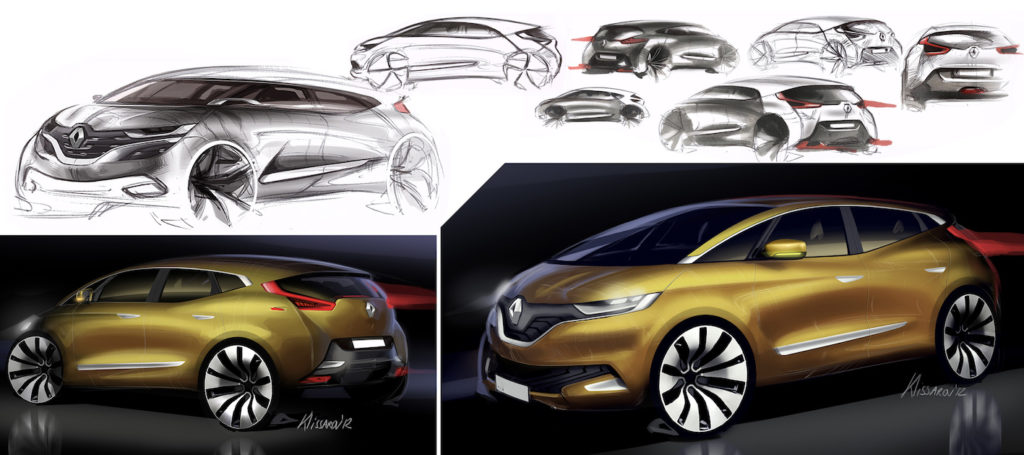
His real achievement at Renault remains the latest-generation Scénic (before the Scénic E-Tech of the Gilles Vidal period), on which work began in 2012. It is the last true MPV in Renault’s history.
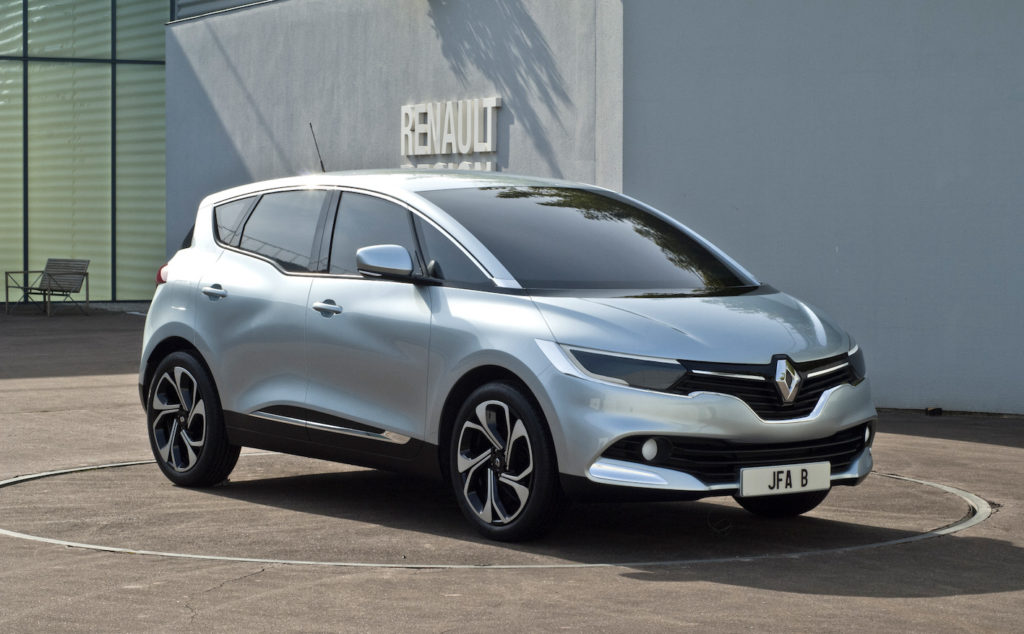
‘’I worked a lot on the proportions and the formal language, in keeping with the brand. The first sketches expressed real dynamism with a silhouette that respected the iconic proportions of the MPV. The development of the 1:1 clay model was based on the convergence model developed by Jérémie Sommer. It took a bolder direction when the design theme was developed in 1/4 scale and then refined.’’
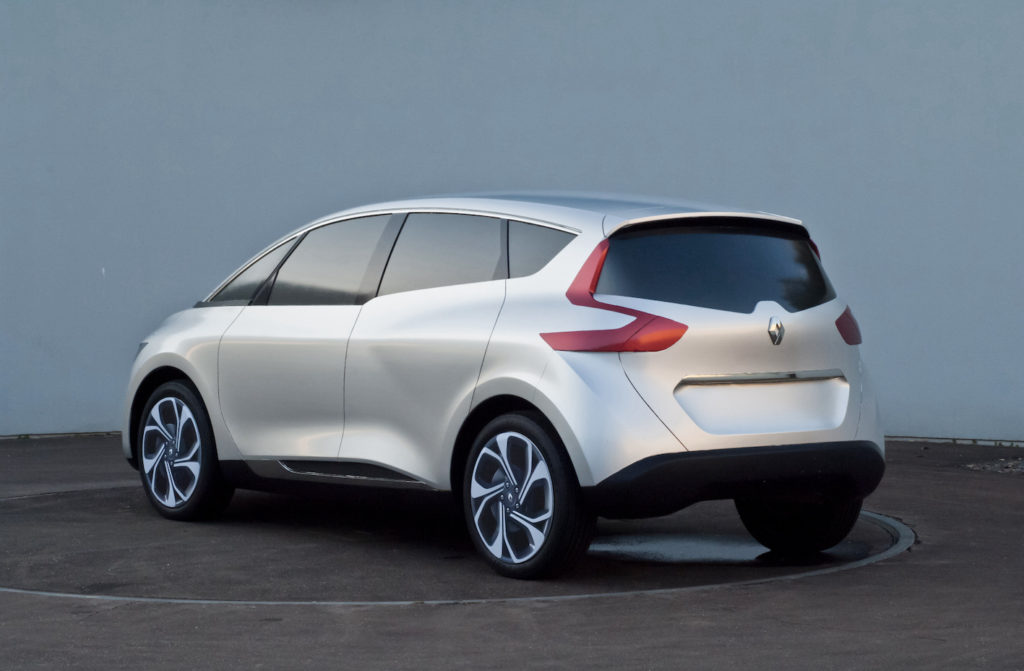
‘’The 1/1 scale model of the Scenic then evolved into the design of the R-Space concept car presented in 2011.’’ At the time, Axel Breun was in charge of Renault’s concept cars. ‘‘The front three-quarter view retained the original design direction, emphasising the car’s width.’’
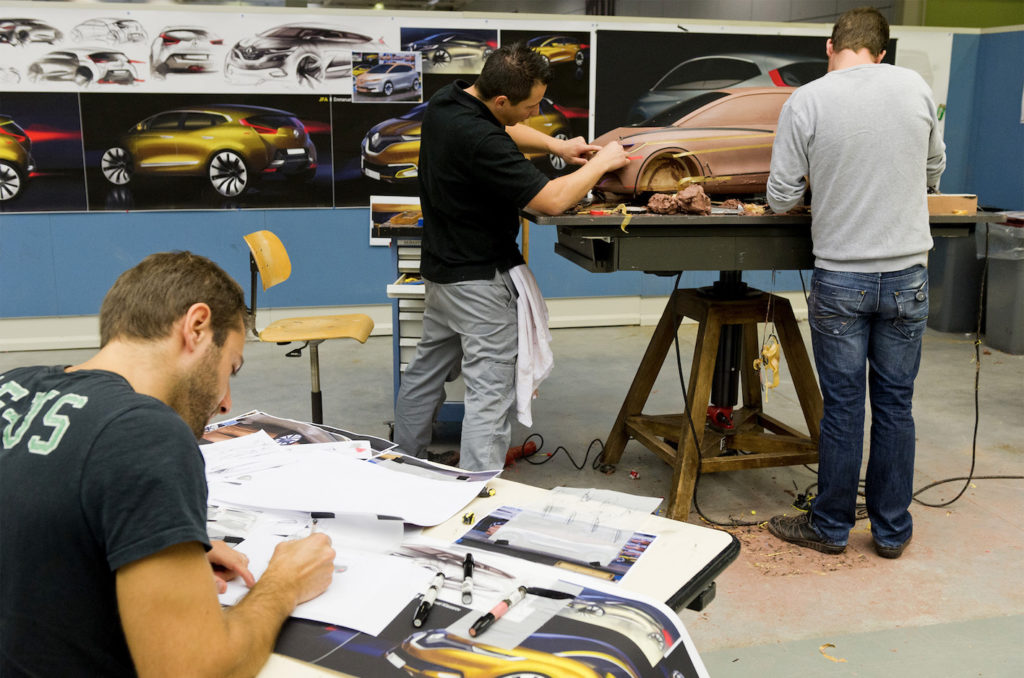
In 2018, why not add Germany to his hunting list? After a long period at Renault, Emmanuel Klissarov has set his sights on Mercedes. ‘‘My projects at Renault went very well and I was able to get six months’ sabbatical to travel around the world with my partner. I think it’s important to travel to stimulate creativity and a trip like that could influence it.’’
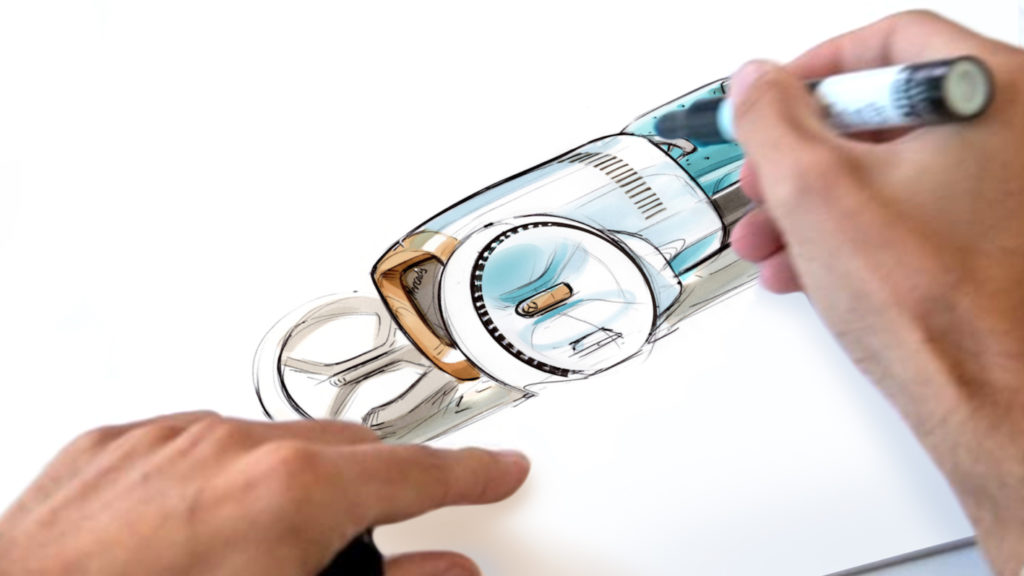
‘’But in the meantime, Tesla and Mercedes contacted me. Personally, I wanted to experience working with Germans, firstly because I speak the language and because I felt it was important for my own career development. So, I chose the Mercedes option.’’ However, Germany will not be Emmanuel’s destination, as he will be returning… to France!
TO BE CONTINUED HERE, PARTS 2 AND 3 : http://lignesauto.fr/?p=31003
Feel free to download the PDFs at the beginning of this topic, with bonuses and unpublished documents
